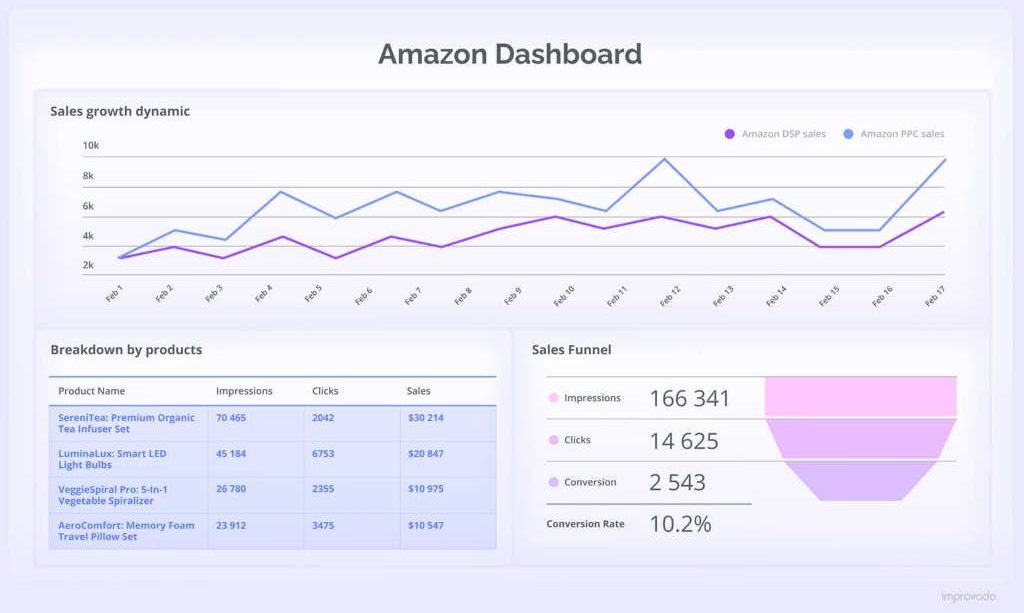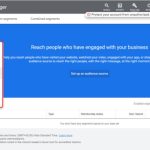Imagine this. You run a cozy online bookstore. Sales hum along nicely from loyal readers. But growth stalls. You crave fresh faces who devour thrillers like your top buyers do. Enter lookalike audiences in Google Ads. These smart tools mirror your best customers. They help you reach new prospects who share similar traits. Businesses love them because they cut waste and lift results.
According to a 2025 report from WordStream, a trusted digital marketing authority, remarketing lists paired with similar targeting often double click-through rates compared to standard campaigns. Additionally, Google Ads data shows custom intent audiences, akin to lookalikes, can spike conversion rates by 20%. In simple terms, lookalikes use your first-party data to find untapped gold. They build on seed lists of engaged users. This approach scales reach without guessing games. As privacy rules tighten, these audiences shine brighter. They rely on your own customer insights, not cookies. Ready to try? Let’s dive in. You’ll soon craft audiences that feel like old friends to your brand.
What Are Lookalike Audiences in Google Ads?
Lookalike audiences expand your reach smartly. They target users who resemble your current customers. Google analyzes behaviors, interests, and demographics from your seed data. Then, it finds matches across its vast network. This method feels natural, like spotting twins in a crowd.
First, understand the basics. Unlike broad targeting, lookalikes start narrow. You provide a “seed” group, such as recent buyers or app users. Google then generates a larger pool of similar folks. For instance, if your seed loves eco-friendly gadgets, lookalikes might include sustainability enthusiasts. This precision drives efficiency.
Moreover, these audiences fit Demand Gen campaigns best. Launched in 2024, Demand Gen replaced Discovery ads. It focuses on visuals and engagement across YouTube, Gmail, and Discover. Lookalikes thrive here because they pair with creative formats like carousels. Businesses report broader yet relevant exposure.
However, note the shift from old “Similar Audiences.” Google retired those in 2023 due to privacy shifts. Now, lookalikes emphasize first-party data. This change boosts trust and compliance. As a result, advertisers gain stronger signals for better matches.
In addition, lookalikes adapt to your goals. They can prioritize high-value traits, like repeat purchases. This flexibility makes them a staple for growth-focused marketers. Overall, they turn data into discovery, helping you connect with prospects who convert.
Why Use Lookalike Audiences? Key Benefits
Lookalike audiences transform campaigns. They scale efficiently while keeping relevance high. Let’s explore why they matter.
First, they boost conversions. By mirroring top performers, you reach ready-to-buy users. A 2025 Pixis study found lookalikes increase sales by 25% in e-commerce setups. For example, a fitness app used them to find gym enthusiasts. Conversions jumped because the matches shared workout habits.
Second, they save budget. Instead of spraying ads everywhere, you focus on quality. Google estimates lookalikes reduce cost per acquisition by 15-20% in targeted setups. This efficiency lets small teams compete with giants.
Additionally, they enhance privacy compliance. Built on your consented data, they avoid third-party tracking pitfalls. As cookies fade, this edge grows vital. Marketers sleep better knowing their strategies align with regs like GDPR.
Furthermore, lookalikes spark creativity. Pair them with video ads for storytelling. A travel brand did this. They seeded with past bookers and targeted wanderlust seekers. Engagement soared, with views up 30%.
Finally, they offer insights. Google provides performance breakdowns. You learn what traits drive results. This data refines future efforts. In short, lookalikes don’t just reach; they reveal paths to smarter growth.
Preparing Your Seed Audience: The Foundation
Success starts with a solid seed. This core group powers your lookalike magic. Choose wisely to build strong matches.
Begin by gathering first-party data. Pull from CRM, website tags, or app events. Aim for 1,000 to 5,000 users, per Google’s 2025 guidelines. Smaller lists work now, down from old 1,000 minimums. A B2B firm tested 100-seed lists and saw sharp targeting.
Next, focus on quality over quantity. Select high-engagement folks, like purchasers or subscribers. Avoid broad lists; they dilute signals. For a coffee shop, seed with loyalty members. This captures caffeine lovers precisely.
Also, ensure freshness. Update seeds quarterly. Stale data leads to off-base lookalikes. Tools like Google Analytics help track recent interactions.
Moreover, segment strategically. Break into niches, such as “high-spenders” or “trial users.” Test multiple seeds. One e-retailer compared buyer vs. browser seeds. Buyers yielded 40% better ROI.
In addition, comply with consent. Only use opted-in data. This builds trust and avoids penalties.
Finally, upload cleanly. Format as CSV with emails or IDs. Google matches 70-80% typically. Troubleshoot mismatches via help docs.
With a robust seed, your lookalikes bloom. They mirror real value, setting campaigns up for wins.
Step-by-Step Guide: How to Create Lookalike Audience in Google Ads

Ready to build? Follow these steps. We’ll keep it hands-on, like a workshop session.
Step 1: Set Up a Demand Gen Campaign
Launch into Demand Gen first. This home for lookalikes supports visuals and broad reach.
Log into Google Ads. Click “Campaigns” then “+” for new. Select “Demand Gen.” Choose goals like sales or leads. Name it clearly, say “Lookalike Book Lovers.”
Set budget and locations. Start small, $50 daily, to test. Pick languages matching your seed. Save and proceed. This foundation ensures lookalikes deploy smoothly.
Step 2: Access Audience Manager
Navigate smartly. From the left menu, go to “Tools & Settings.” Under “Shared Library,” click “Audience Manager.”
Here, view existing lists. If none, create basics like website visitors. This prep stocks your seed options. Spend a minute reviewing; it pays off.
Step 3: Create or Select Your Seed List
Build the heart. In Audience Manager, hit blue “+” . Choose “Customer List” or “Website Visitors.”
For customer lists, upload CSV. Map fields: email, phone. Google hashes for privacy. Wait 24-48 hours for processing.
Alternatively, use remarketing tags for site data. Tag purchase pages. Seeds form from converters. A bakery did this; their pie fans became the base.
Test size. Aim 1,000+. Name it “Top Buyers Q4 2025.” Save. Now, your blueprint exists.
Step 4: Generate the Lookalike Segment
Dive deeper. Back in your Demand Gen campaign, edit the ad group.
Under “Audiences,” click “Browse.” Scroll to “Lookalike.” Select “New Segment.”
Pick your seed from the dropdown. Adjust similarity slider. Low for broad (10% match), high for tight (1%). Start medium for balance.
Set locations and languages. Exclude current customers if needed. Name it “Book Lookalikes V1.” Create. Google builds it in hours.
Step 5: Apply to Your Campaign
Integrate now. In ad group settings, add the lookalike under targeting.
Choose “Targeting” mode for focus, or “Observation” to layer on. Bid adjustments? Add 20% for premium matches.
Upload creatives: images, videos. Tailor copy to shared interests, like “Thrillers for Night Owls.” Launch. Monitor early.
Troubleshoot: If no audience shows, check seed size. Refresh data. You’re live!
Best Practices for Optimizing Lookalike Audiences
Optimization turns good into great. Apply these tips for peak performance.
First, experiment relentlessly. Run A/B tests on seeds. One apparel brand swapped general vs. VIP lists. VIPs cut costs 25%.
Second, layer with other signals. Combine lookalikes and in-market audiences. This hybrid boosts relevance. A tech gadget seller saw 35% lift in clicks.
Third, monitor metrics closely. Track CTR, CPA, and ROAS weekly. Use Google Analytics for deeper views. Pause underperformers fast.
Additionally, refresh regularly. Update seeds monthly. As seasons change, so do behaviors. A holiday shop rotated festive buyers. In my email marketing job, I’ve seen how important it is to adapt strategies in line with these seasonal changes to effectively engage customers.
Furthermore, scale gradually. Start with 5-10% similarity. Expand if ROAS holds. Avoid overreach; it thins quality.
Also, personalize ads. Reference seed traits in copy. “Like Our Eco-Warriors? Join the Green Team.” Engagement follows.
Finally, analyze insights. Google’s reports show trait breakdowns. Tweak based on winners. These habits sustain long-term wins.
Real-World Examples and Case Studies
Stories inspire action. Let’s spotlight successes.
Take a home decor brand entering new markets. They seeded with high-value buyers. Lookalikes targeted design enthusiasts. Result? 3x qualified leads in month one. Ads featured cozy room visuals, resonating instantly.
Another gem: An e-commerce pet store. Facing stalled growth, they built lookalikes from purchase data. Paired with discounts, campaigns hit 25% sales rise quarterly. New owners mirrored loyal ones, snapping up toys and treats.
Consider a B2B software firm. They dropped seed minimums to 100 users. Lookalikes found decision-makers in niches. Leads surged 40%, fueling demos. Geo-fencing added local flavor.
A restaurant chain tested too. Seeding dine-in data, they reached foodies via YouTube shorts. Foot traffic rose 15%, per location extensions.
These tales prove it. Lookalikes adapt across industries. They turn data into dollars, one match at a time.
Common Mistakes to Avoid with Lookalike Targeting
Pitfalls lurk. Sidestep them for smooth sails.
Don’t skimp on seed quality. Broad lists breed vague matches. A gadget shop learned this; junk data wasted 30% budget. Curate carefully instead.
Avoid static setups. Forgetting updates dooms relevance. Refresh or risk fading signals. Schedule reviews.
Also, ignore expansion traps. Too broad sliders flood irrelevants. Test tight first. Balance reach with precision.
Furthermore, neglect exclusions. Forgetting to block current customers overlaps wastefully. Layer negatives smartly.
Finally, skip testing. Launching blind invites flops. Always A/B. Learn from data, not regrets.
By dodging these, your lookalikes thrive. Campaigns stay lean and mean.
Measuring Success: Metrics That Matter
Track to triumph. Key metrics guide your tweaks.
Start with ROAS. It shows revenue per ad dollar. Aim for 4:1 baseline. Lookalikes often push higher.
Next, monitor CPA. Lower means efficient acquisition. Compare pre- and post-lookalike.
Also, eye CTR. Above 2% signals resonance. Spikes indicate strong matches.
Additionally, conversion volume. Growth here validates scaling. Tie to seed traits.
Use tools like Google Ads reports. Segment by audience for clarity.
Regular audits reveal winners. Adjust bids on stars. This data loop fuels ongoing gains.
Conclusion
Lookalike audiences open doors to growth. They mirror your best customers for smarter targeting. From seeding strong to optimizing relentlessly, each step builds value. Remember the home decor win? 3x leads came from focused effort. You can too.
Now, act. Log in, craft your first seed, and launch a Demand Gen test. Watch conversions climb. Share your story—we’d love to hear it.
FAQs
What is the minimum seed size for lookalike audiences in Google Ads?
Google lowered it to 100 users in 2024. This change helps smaller businesses. Larger seeds, around 1,000-5,000, yield sharper matches. Start with engaged converters for best results.
Can I use lookalike audiences in Search campaigns?
No, they’re exclusive to Demand Gen. For Search, try Optimized Targeting. It finds converter-like users automatically. This alternative keeps prospecting sharp.
How long does it take to build a lookalike segment?
Creation takes minutes. Full matching needs 24-48 hours. Performance insights build over weeks. Patience pays as data flows.
What data sources work for seeds?
Use customer lists, website visitors, or app users. Emails, phones, or events all fit. Ensure consent for compliance. Fresh CRM pulls shine brightest.
How do lookalikes differ from remarketing?
Remarketing re-engages known users. Lookalikes hunt new ones like your seeds. Combine them for full-funnel power. Remarketing warms; lookalikes ignite.





